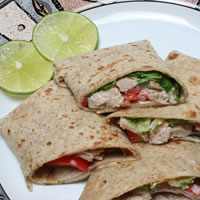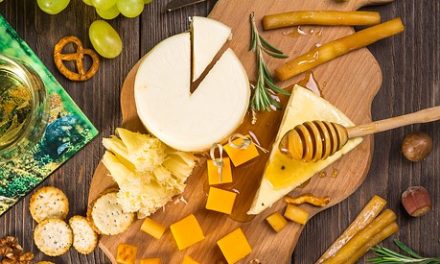In the worlds of food and dance, salsa means spice - often, the hotter the better.
Since the Mexicans thought up salsa (the food), it has taken a strong hold north of the border. In the U.S., the ubiquitous sauce has replaced ketchup as the best-selling condiment. Salsa - "sauce" in Spanish - can be enjoyed at many points of a meal.
Fresh fruit and vegetable salsas with tortilla chips are popular appetizers. With main courses, salsas are served as condiments or toppings. Many people use the sauces as an alternative seasoning to salt and pepper.
Salsas can be chunky or smooth, thin or thick, hot or mild and just about any color. The variety is endless. Since they are generally made without oil, contain no fat or cholesterol and have relatively few calories, salsas are a healthful way to spice up any meal.
A huge variety of commercial salsas are available in supermarkets, and some are quite good. When buying salsa, look for those without starch, sugar, or preservatives. Unopened, they can be stored at room temperature for up to six months. Once opened, they can stay in the refrigerator for a month.
Fresh salsas are often found in a market's refrigerated section. They should be tightly covered and may be refrigerated up to five days.
In the summer, salsas are easy to make with local produce. In colder months, canned fruits and vegetables can be used. Improvements in processing have given canned fruits better color, texture and shelf-life.
The tropical salsa below is a good complement to poultry, pork, or fish. Once considered exotic, mangoes are now found in most supermarkets. The cilantro provides a complementary spark to the mellow flavor of the mango.
Tropical Salsa
Yield: Makes 1-1/2 cups.
Ingredients:
- 1/2 cup finely-chopped red onion
- 2 mangoes (or 2 papaya or 6 nectarines), peeled and diced small
- 2 Tbsp. fresh lime juice, or to taste
- 1/2 cup finely-minced fresh cilantro leaves
- 1-2 Tbsp. rice vinegar, or to taste
Ingredients:
- Place chopped onion in a heatproof bowl (e.g. Pyrex) or measuring cup and add boiling water to cover. Let stand for a few minutes.
- In the meantime, mix fruit and juice in a large bowl. Add cilantro and vinegar and mix well.
- Drain onion and add to fruit mixture, mixing well. Taste, adding more vinegar and/or juice if desired.
- Salsa may be served immediately or can be stored, covered, in the refrigerator 2 to 3 days.
Per tablespoon:
26 calories,
0 g. total fat (0 g. saturated fat),
7 g. carbohydrate,
less than 1 g. protein,
1 g. dietary fiber,
2 mg. sodium.
Diabetic Exchanges:
1-1/2 Vegetable
AICR









